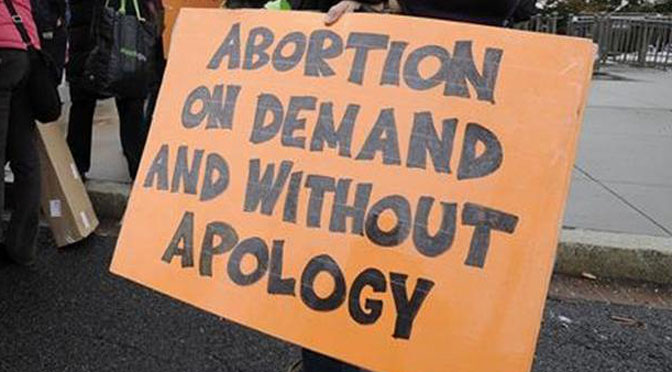Abortion advocates often bemoan the so-called restrictive laws in the United States, claiming that it prevents women from obtaining abortions. But a new study released by the Guttmacher Institute blows a devastating hole in that narrative. The Guttmacher Institute is a pro-abortion organization that previously functioned as Planned Parenthood’s research arm. The study, titled “Time to Appointment and Delays in Accessing Care Among U.S. Abortion Patients,” aimed to find out how long most American women had to wait before undergoing their abortion procedure.
In the press release, Guttmacher admits that the majority of women, at 76%, are able to undergo an abortion within one week of calling to make an appointment. Less than 1 in 10 women reported having to wait longer, but even then, the women were still able to get abortions.
And yet, even that is painted as a tragedy. Elizabeth Nash, senior state issues manager at the Guttmacher Institute, said, “It is concerning that nearly one in 10 abortion patients experienced delays of more than two weeks before they were able to access abortion services.” She then tried to link this to restrictive abortion laws like waiting periods, saying, “The purported rationale for waiting periods is to give individuals more time to consider their decision, yet the overwhelming majority of patients have already made up their minds prior to making an appointment. Waiting periods pose an unnecessary burden for individuals seeking abortion care and should be eliminated.”
But is that even what the study found?
In the press release, Guttmacher admits that there were multiple things that led to longer wait times: “disruptive” life events (like losing a job or falling behind on rent), having two or more children, having to undergo a second-trimester abortion, and finally, the dreaded waiting periods. One of the study authors, Rachel K. Jones, again tries to make waiting periods the crux of the issue. “Timely access to abortion is critical. Even a delay of a few days can mean that medication abortion is not an option, or it can cause an increase in the cost of the procedure if it pushes the patient into the second trimester,” she said. “If patients didn’t need to raise money to cover the cost of the procedure or have to overcome state-imposed hurdles, such as waiting periods, they would be able to access abortion services sooner.”
While staffers at Guttmacher have tried desperately to spin the results into “proof” that waiting periods and pro-life laws are causing irreparable harm to women, the study instead found the opposite. Only a very small number of women, at 7%, have to wait longer than two weeks — the rest are able to get abortions within a matter of days. (Perhaps Guttmacher would like to compare this to Europe, where waiting periods are considerably longer and abortion is much more restricted.)
It’s a sign of how extreme the abortion industry is that women having to wait mere days is seen as some kind of horrific injustice that must be righted.








